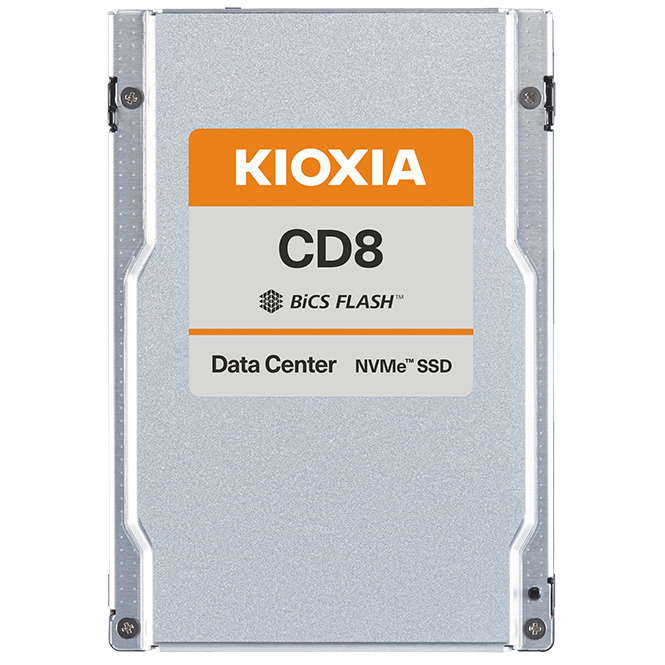Please select your location and preferred language where available.
Kioxia Introduces 2nd Generation SSDs Designed with PCIe® 5.0 Technology for Enterprise and Hyperscale Data Centers
New KIOXIA CD8 Series Improves Performance by Approximately 14% Over Previous Generation SSDs
- March 23, 2022
- Kioxia Corporation
Tokyo – The first vendor to offer a drive designed with PCIe® 5.0 interface technology[1], Kioxia Corporation today announced that it has built on this achievement by introducing its 2nd generation SSDs. The company’s new KIOXIA CD8 Series data center NVMe™ SSDs (“CD8 Series”) are optimized for hyperscale data center and enterprise server-attached workloads, and utilize PCIe 5.0 interface technology, which doubles the bandwidth over PCIe 4.0 from 16 gigatransfers per second (GT/s) to 32GT/s. The CD8 Series is now available for customer evaluation.

Based on Kioxia’s 5th generation BiCS FLASH™ 3D flash memory technology, the CD8 Series utilizes a proprietary Kioxia controller and firmware, which can be customized to customer needs, and is housed in a 2.5-inch[2], 15mm Z-height form factor. The new drives are designed to the PCIe 5.0, Open Compute Project (OCP) Datacenter NVMe SSD 2.0 and NVMe 1.4 specifications, and are well-suited to applications and use cases that include high-performance computing, artificial intelligence, caching layer, financial trading and analysis.
Additional features include:
- Read-intensive 1DWPD (Drive Write Per Day) endurance models targeted for hyperscale and server-centric workloads, in capacities from 960GB to 15.36TB
- Mixed-used 3DWPD endurance targeted models are available, in capacities from 800GB to 12.8TB
- Delivers up to 1.25M random read IOPS and 7.2GB/s sequential read throughput, an improvement of approximately 14% over the previous generation version[3]
- Security options include sanitize instant erase (SIE) and self-encrypted drive (SED) [4]
Notes
[1] KIOXIA CD7 E3.S Series, as of November 9, 2021. Kioxia survey.
[2] “2.5-inch" indicates the form factor of the SSD. It does not indicate the drive's physical size.
[3] 1DWPD model comparison with the previous generation KIOXIA CD7 Series.
[4] Availability of security/encryption options may vary by region.
- The sample drives are for evaluation purposes. The specifications of the sample drives may differ from the production drive models.
- Definition of capacity: Kioxia defines a megabyte (MB) as 1,000,000 bytes, a gigabyte (GB) as 1,000,000,000 bytes and a terabyte (TB) as 1,000,000,000,000 bytes. A computer operating system, however, reports storage capacity using powers of 2 for the definition of 1Gb = 2^30 bits = 1,073,741,824 bits, 1GB = 2^30 bytes = 1,073,741,824 bytes and 1TB = 2^40 bytes = 1,099,511,627,776 bytes and therefore shows less storage capacity. Available storage capacity (including examples of various media files) will vary based on file size, formatting, settings, software and operating system, and/or pre-installed software applications, or media content. Actual formatted capacity may vary.
- Read and write speeds are the best values obtained in a specific test environment at Kioxia Corporation and Kioxia Corporation warrant neither read nor write speeds in individual devices. Read and write speed may vary depending on the device used and file size read or written.
- PCIe is a registered trademark of PCI-SIG.
- NVMe is a registered or unregistered mark of NVM Express, Inc. in the United States and other countries.
- All other company names, product names and service names may be trademarks of their respective companies.
Customer Inquiries:
Global Sales Offices
Information in this document, including product prices and specifications, content of services and contact information, is correct on the date of the announcement but is subject to change without prior notice.